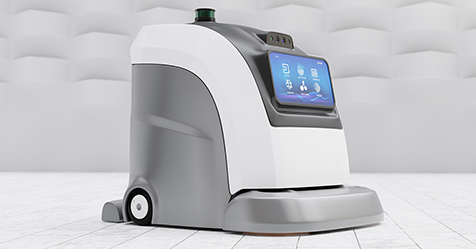Protect Building Residents from the Flu During the COVID-19 Pandemic
Follow these tips to prepare your facility during a challenging winter
With health experts warning conditions are ripe this fall and winter for a severe flu season, facility managers and custodians are setting up a game plan for cleaning and disinfecting. Although cleaning professionals have been working to protect building residents from COVID-19 since 2020, this fall and winter present new challenges as most schools and many offices have reopened.
GSF USA, a provider of cleaning services, is one of the companies working to step up its plan for the 2021-2022 flu season. It offers the following tips:
- Develop a comprehensive cleaning plan and train staff –Outline a detailed cleaning plan that specifies cleaning tasks and frequencies. If a flu outbreak occurs, increase disinfecting. Most importantly, train staff to use cleaners, disinfectants, personal protective equipment, and tools correctly.
- Focus on common touchpoints – The flu virus can survive on hard surfaces for up to 48 hours. During flu season, it’s important to clean and disinfect high touchpoints regularly to limit the spread of pathogens. These include door handles, light switches, sink handles, elevator buttons, and any other surfaces that are touched by many people frequently.
- Increase daytime cleaning – Daytime cleaning has become more common during the COVID-19 pandemic and is an effective strategy for combatting the flu as well. Cleaning during the day allows a facility to increase the frequency of cleaning and disinfecting. It also enables cleaning staff to stay on top of tasks while building occupants are present and its needed most, rather than waiting until the end of the day.
- Encourage handwashing and provide hand sanitizer in key areas – Washing your hands with soap and water is the best way to kill germs—including influenza. Placing signage in all handwashing areas reminds building occupants and visitors how to effectively wash hands. In addition, placing accessible hand sanitizer at entrances and throughout the facility, such as near elevators, is another way to help reduce the spread of germs.
- Require staff and visitors to stay home when sick– Coming to work or school sick is no longer acceptable. Ensure your facility’s sick policy is up-to-date and communicate it to everyone in the facility.
“While flu season is an inevitable annual occurrence, facility managers can limit the impact that illness has on their building visitors and cleaning staff,” said Kurt Kuempel, general manager, GSF Illinois and Wisconsin. “Being prepared is key to feeling confident that you can reduce the risk of infection and widespread outbreaks that can take a toll on productivity and the bottom line.”

